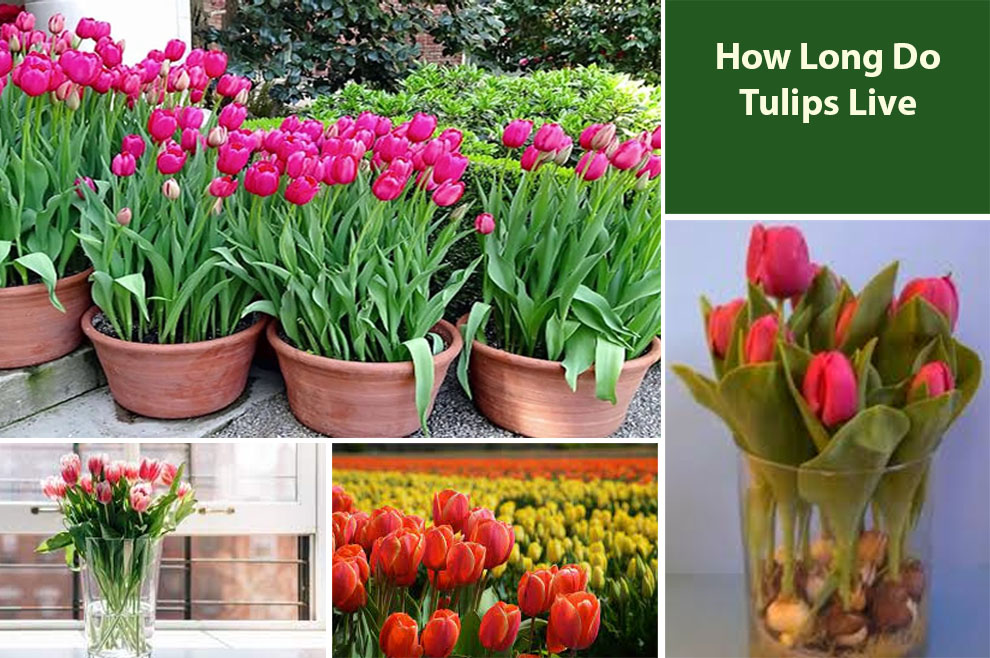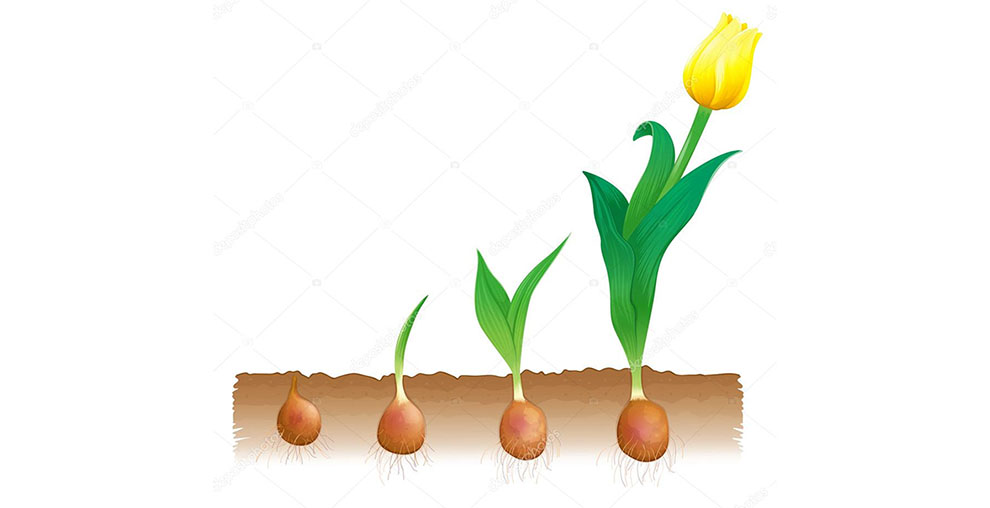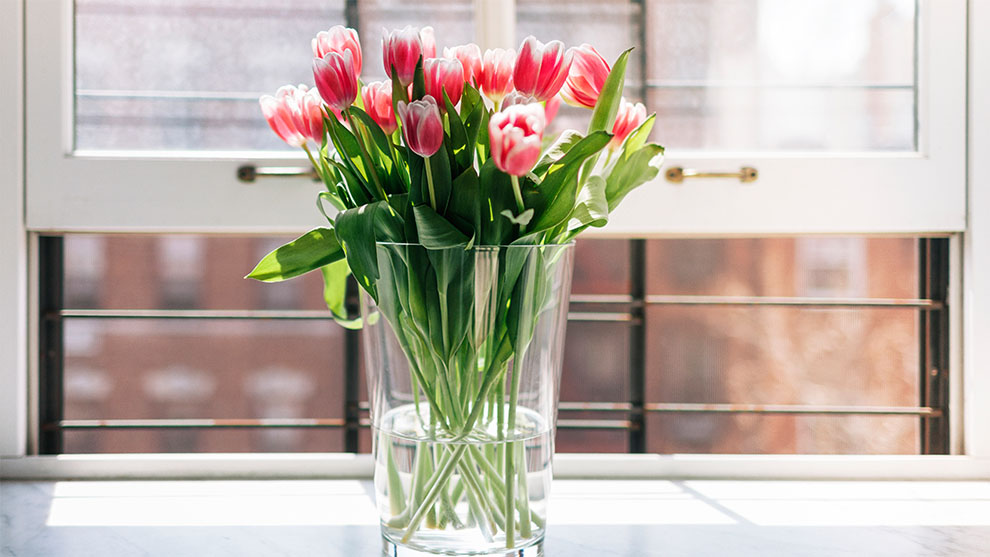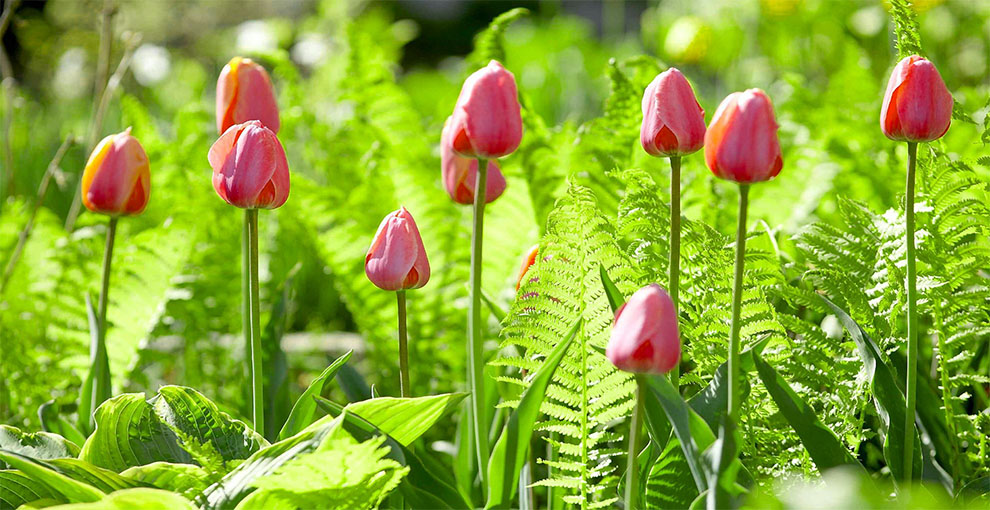Tulip Lifespan: How Long Can Tulips Live To Bloom?
Tulips are perennials. They live for more than one season to bloom. Their lifespan is about three to seven years under optimal conditions.

Tulips are popular and beloved flowers known for their vibrant colors and elegant blooms. However, when it comes to their lifespan and perennial nature, there are some important factors to consider.
While tulips can technically live for 3-7 years and produce blooms, tulip lifespan can be more limited in certain climates or when grown in different conditions.
Tulips are classified as herbaceous perennials, which means they can regrow and bloom year after year. However, their longevity and ability to return reliably can vary depending on several factors, including the specific variety, growing conditions, and cultural practices.
In some cases, tulips may exhibit reduced vigor or shorter lifespans, especially in areas with mild or hot climates or where the soil conditions are not ideal.
To maximize the lifespan of tulips and encourage their return year after year, it is important to provide them with proper care.
It’s worth noting that some gardeners treat tulips as annuals, replanting new bulbs each year to ensure consistent and optimal displays. This allows for greater control over color choices and guarantees fresh blooms every spring.
Tulip Flower Lifespan

Tulip bulbs can remain active for multiple years, producing flowers each season before eventually becoming inactive. With proper care, some tulip varieties can continue to bloom for 3-7 years.
However, as time passes, the bulbs may diminish in size and blooming capacity, resulting in smaller and fewer flowers. Eventually, they may reach a point where they no longer produce blooms effectively.
Therefore, while tulip bulbs can provide multiple years of flowering, their lifespan is ultimately limited, and they may require periodic replanting or rejuvenation.
Tulip Growth and Blooming Cycle
The growth rate of tulips and blooming cycle of tulips can be divided into three main stages. Each stage has a different duration and plays a role in the overall lifespan of tulips.
1. Sprouting: After planting tulip bulbs in the fall, they enter a period of dormancy throughout the winter. As temperatures begin to rise in early spring, the bulbs receive signals to start growing.
The sprouting stage is characterized by the emergence of shoots from the ground, which eventually develop into stems. This stage typically lasts for a few weeks.
2. Flowering: The flowering stage is the most visually stunning part of the tulip’s growth cycle. It begins when the buds at the tip of the stems start to open, revealing the colorful petals.
The blooming period of tulips generally lasts for one to three weeks, depending on the tulip variety and environmental conditions.
3. Dormancy: After the flowering stage, tulips enter a period of dormancy. This stage occurs during the summer months when the foliage gradually withers and turns brown. The duration of the dormancy stage is relatively long, lasting several months.
When Do Tulips Bloom?
Tulips typically bloom in the spring, although the exact timing can vary depending on the specific species, cultivar, and geographical location.
In general, tulips bloom during the late winter or early spring months, with peak blooming periods occurring in March, April, and May in many regions.
The timing of tulip blooms can also be influenced by factors such as climate and weather conditions. Warmer climates tend to experience earlier blooming, while colder climates may see tulips bloom later in the spring.
Additionally, variations in elevation and local microclimates can affect the timing of tulip flowering within a specific area.
Do Tulips Come Back Every Year?
Tulips are typically considered to be perennial plants, which means they can come back and bloom for multiple years under the right conditions. However, it’s important to note that the extent to which tulips reliably return each year can vary.
Factors Influencing Tulip Lifespan
The lifespan of a tulip can be influenced by various factors. Here are some key factors that can impact the lifespan of tulip trees.
- Environmental factors like sunlight, weather conditions, extreme temperatures
- Care practices like watering, fertilizers, and pruning
- Diseases and pests adversely affect the lifespan of tulips
- Tulip varieties and genetics3
How Long Do Tulips Live In A Vase As Cut Flowers?

Tulips are beautiful cut flowers that can brighten up any space. The lifespan of tulips as cut flowers can vary depending on various factors, such as the freshness of the flowers, environmental conditions, and proper care.
On average, cut tulips can last anywhere from 5 to 7 days in a vase.
Extending the Lifespan of Tulips
Extending the lifespan of tulips involves considering pre-planting, planting, and care, as well as after-bloom care. Here are some tips for each stage:
Pre-planting Considerations:
1. Bulb Selection: Choose high-quality tulip bulbs from reputable sources. Look for bulbs that are firm, free of blemishes, and have no signs of rot or disease. Larger bulbs often produce stronger and more long-lasting blooms.
2. Soil Quality: Prepare the soil before planting by ensuring it is well-draining and rich in organic matter. Tulips prefer fertile soil with a pH level around neutral. If the soil is heavy or clay-like, improve drainage by adding compost or sand.
Planting and Care Tips:
1. Planting Depth: Plant tulip bulbs at the proper depth, typically around 6 to 8 inches (15 to 20 cm) deep. Follow the specific instructions for the variety you’re planting, as some may have slightly different requirements.
2. Spacing: Give each bulb enough space to grow and spread by planting them a few inches apart. This allows air circulation and reduces the risk of diseases.
3. Watering: After planting, water the bulbs thoroughly to settle the soil and promote root establishment. Ensure the soil is consistently moist but not waterlogged during the growing season. Tulips generally don’t require excessive watering once established.
4. Fertilization: Before planting, incorporate a slow-release tulip bulb fertilizer into the soil. This provides essential nutrients for the bulbs’ growth and future blooms. Follow the package instructions for the recommended application rate.
After-Bloom Care:
1. Deadheading and Removal of Spent Flowers: Once the tulip blooms start to fade, remove the spent flowers by snipping off the stems just above the leaves. This prevents the plant from putting energy into producing seeds and redirects its resources back into the bulb.
2. Post-Bloom Feeding: After the tulip flowers have faded, continue to care for the foliage. Allow the leaves to remain on the plant until they turn yellow and wither.
During this time, the plant is photosynthesizing and replenishing the bulb for future growth. To support this process, provide a balanced liquid fertilizer or bulb booster according to the package instructions.
3. Bulb Preparation for Dormancy: Once the foliage has completely died back, carefully lift the tulip bulbs from the ground. Clean off any soil and inspect them for signs of disease or damage.
Store the bulbs in a cool, dry, and well-ventilated area until the next planting season. Proper storage conditions help maintain bulb health and viability.
By considering these pre-planting considerations, following proper planting and tulip care techniques, and providing adequate after-bloom care, you can help extend tulip lifespan.
With good maintenance and attention, tulips can continue to bloom beautifully for many seasons to come.
Alternatives To Extend Tulip Displays

To extend tulip displays and create a more varied and prolonged spring bloom, consider the following alternatives:
1. Division and Bulb Renewal Techniques: After a few years, tulip bulbs may start to decline in quality and produce smaller or fewer blooms.
To rejuvenate the display, dig up the bulbs after the foliage has withered and divide them.
Separate the smaller offsets from the main bulb and replant them at the appropriate depth in a new area or mixed among existing tulip beds. This allows you to refresh and expand your tulip displays.
2. Succession Planting: Instead of planting all your tulip bulbs at once, consider a succession planting approach. Plant a portion of the bulbs in the fall and then plant additional batches at weekly intervals for a few weeks.
This staggered planting ensures a continuous bloom sequence as the different batches of tulips mature and flower at different times.
3. Incorporating Other Spring-Blooming Bulbs and Plants: Mix tulips with other spring-blooming bulbs and plants to create a more diverse and longer-lasting display.
Choose complementary species such as daffodils, hyacinths, crocuses, or muscari (grape hyacinths). These bulbs have different bloom times and will extend the overall flowering period.
Additionally, you can incorporate early-blooming perennials or annuals like primroses, pansies, or forget-me-nots to provide additional color and interest.
4. Self-propagating Bulbs: Some tulip varieties have a naturalizing tendency, meaning they can self-propagate and come back year after year without the need for replanting.
Look for species of tulips or specific cultivars known for their ability to naturalize, such as Tulipa clusiana or Tulipa tarda. These tulips will spread over time, creating larger displays and potentially lasting longer in your garden.
5. Move Bulbs Indoors: If you want to enjoy tulips earlier in the year or have more control over their blooming period, you can force tulip bulbs indoors.
Plant the bulbs in containers with well-draining soil in late fall and keep them in a cool, dark location for about 12-16 weeks. Then bring them into a brighter, warmer room to encourage growth and bloom.
Forced tulips can provide an earlier and more concentrated display indoors.
By employing these alternative techniques, you can extend the how long can tulips live in your garden and have a diverse range of spring blooms.
From dividing and renewing bulbs to combining different types of flowers, you can create a more extended and visually appealing display that lasts throughout the spring season.
